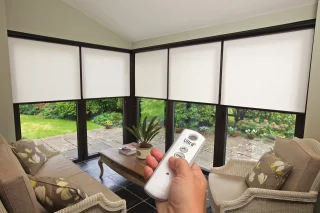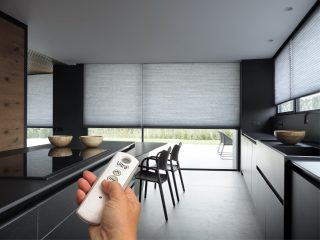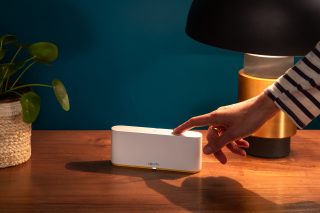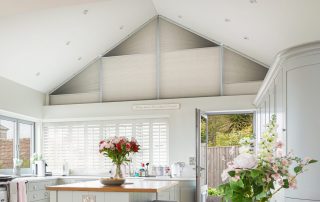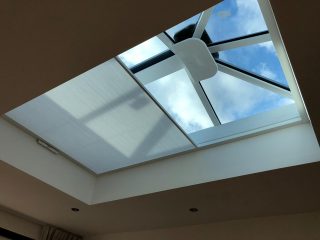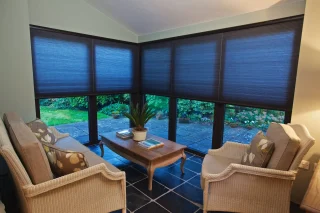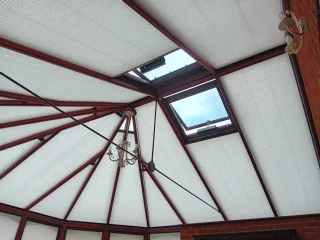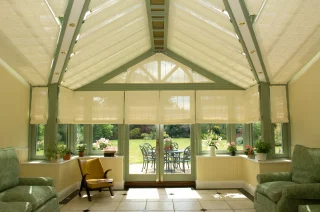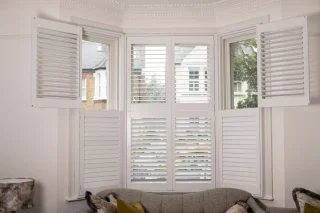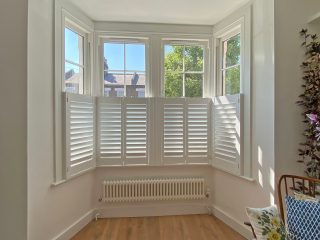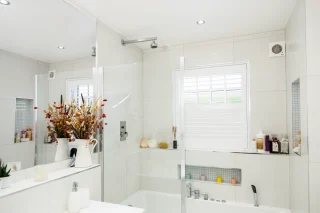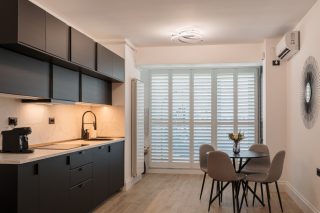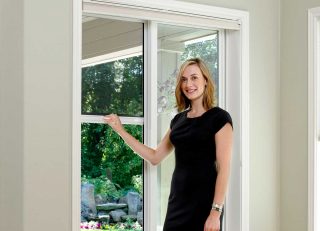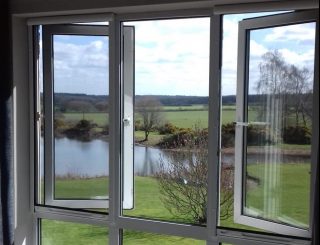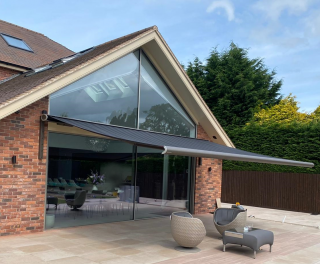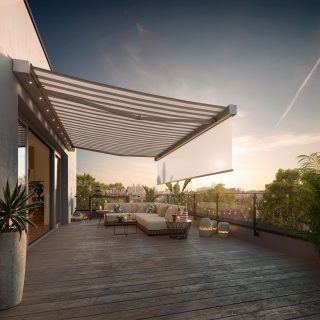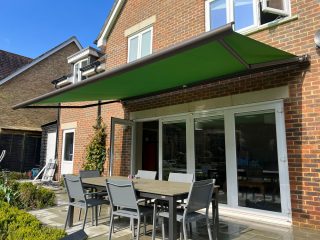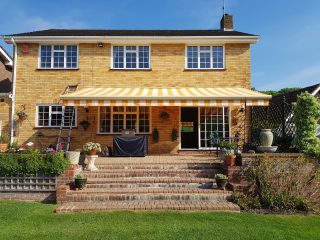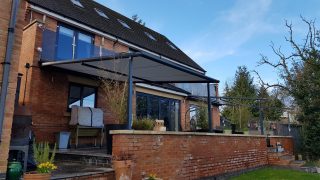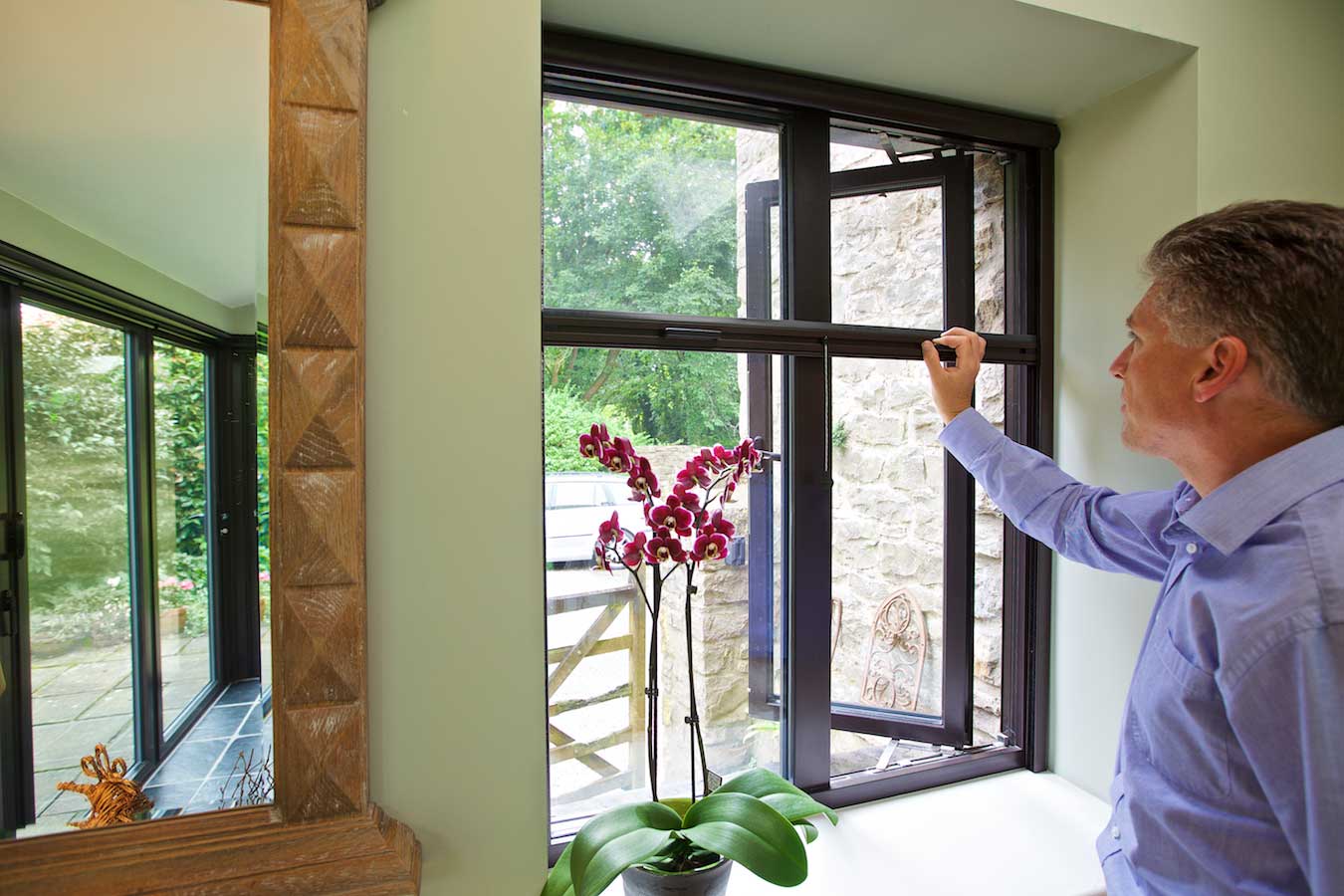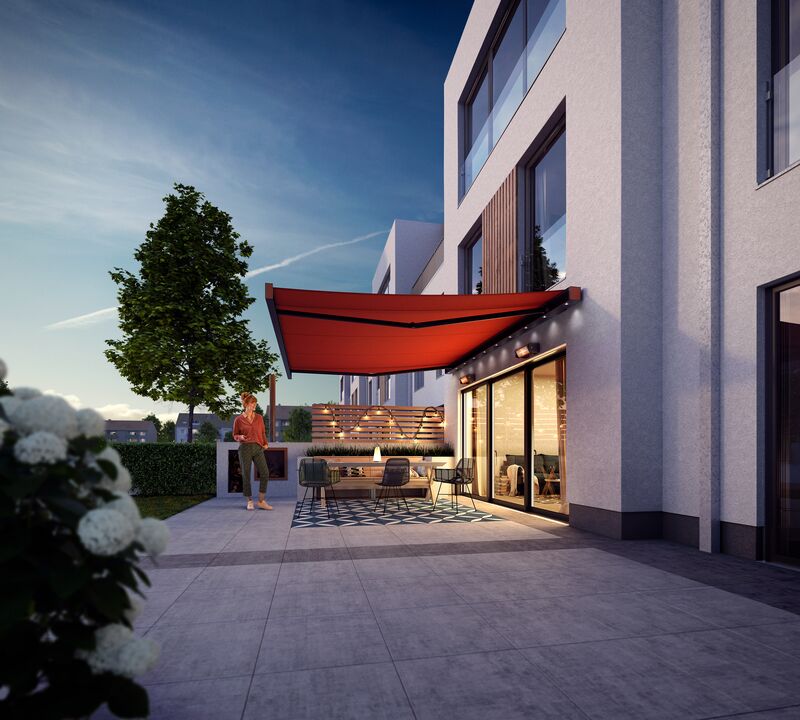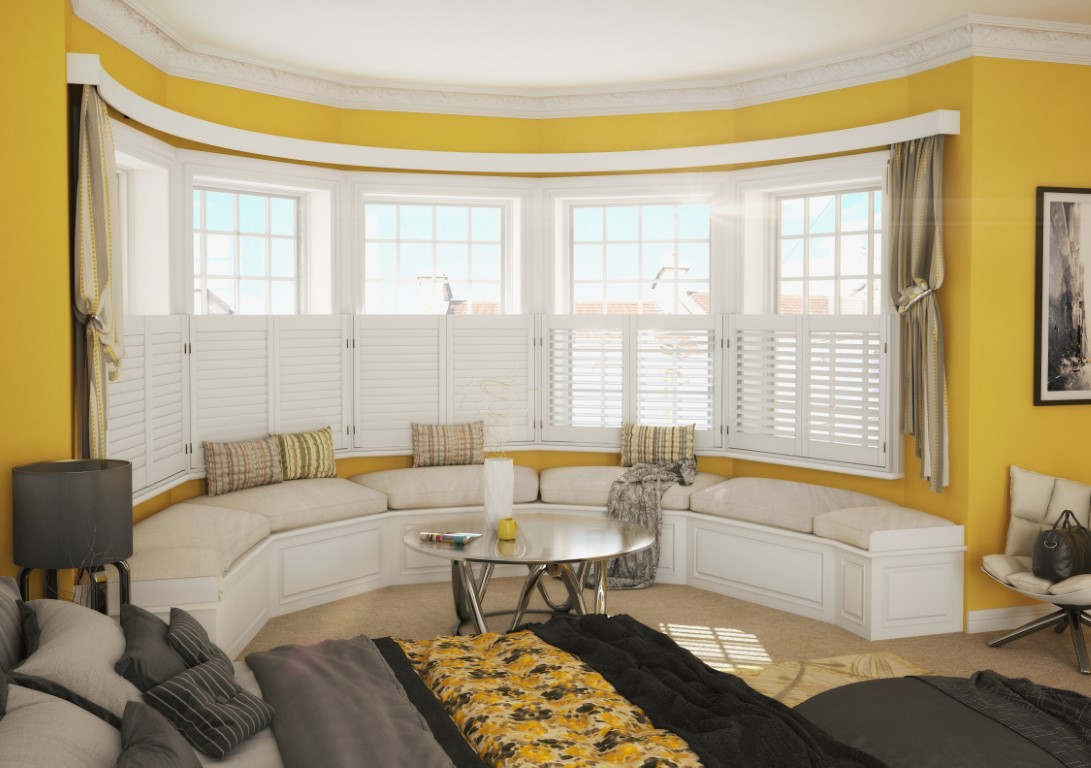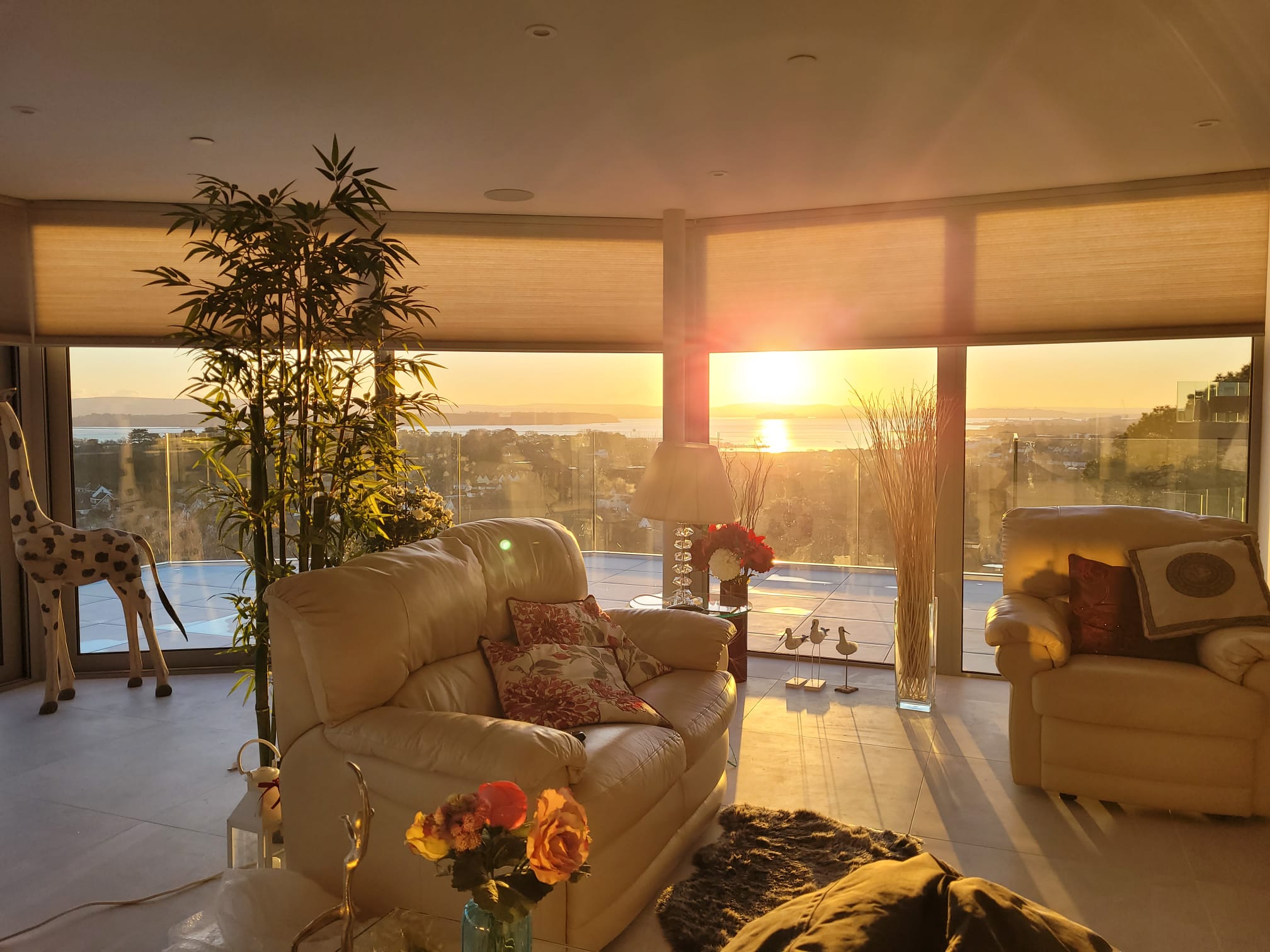
How Appeal’s Window Blinds Can Solve Overheating from Low Sun Angles
Get in Touch!
If you’re feeling inspired to improve your home with our range of blinds, shutters, screens and much more, you can get in touch with our expert design consultants. We’ll be happy to answer any questions you might have.
Contact UsShare this page
As modern housing design evolves, one issue remains at the forefront: overheating. This is particularly common during summer – however in autumn it becomes a unique problem due to the season’s low sun angles.
This problem is exacerbated in homes with large windows, designed to maximise natural light but allowing increased solar radiation, particularly in the UK. Low sun angles, where the sun is lower in the sky during certain times of the day or year, result in prolonged exposure to sunlight, leading to an uncomfortable rise in indoor temperatures despite it being the autumn season.
Modern housing often relies on mechanical cooling systems, such as air conditioning, to manage this. However, this is not always the most energy-efficient or environmentally friendly solution. To address this, many homeowners are now turning to window blinds as a simple yet highly cost-effective solution. Appeal’s range of blinds, particularly the Honeycomb Energy Saver Blinds, offer a practical and stylish solution to overheating from low sun angles.
The Problem of Overheating Due to Low Sun Angles
Overheating in homes is becoming a significant concern as modern architectural trends favour large windows and doors for improved natural light and outdoor views. Unfortunately, these windows allow more sunlight to penetrate, particularly during times of the year when the sun is low in the sky. The result is homes that are excessively warm, making them uncomfortable and often requiring artificial cooling.
In the UK, where low sun angles are common in both autumn and summer, homes are exposed to sunlight for long periods, which leads to increased heat gain. This overheating is especially problematic in newly built homes and office conversions, where regulations for energy efficiency often mean fewer windows or smaller openings. As such, finding a balance between energy efficiency and comfort is crucial.
Appeal’s Energy-Efficient Blinds: A Game-Changer
Appeal’s Honeycomb Energy Saver Blinds have been specifically designed to target the overheating problem while improving energy efficiency. Studies show that these blinds can reduce heat gain by up to 78%, making them highly effective at controlling indoor temperatures without the need for air conditioning.
The blinds feature a unique honeycomb structure that traps air, creating a natural insulation barrier between the window and the room. This insulation significantly reduces the amount of heat passing through the windows, helping to keep homes cooler during periods of direct sunlight. What’s more, this design works both ways, helping to retain heat during the colder months and reducing heat loss by up to 46%, making the blinds a year-round solution for temperature regulation.
Reducing Glare and Protecting Interiors
Overheating isn’t the only issue caused by low sun angles. Glare is another common problem, particularly in homes with large, south-facing windows. Direct sunlight can make it difficult to enjoy activities like watching TV or working on a computer. Appeal’s Solar Reflective Blinds offer a solution to this by reflecting sunlight away from the window, reducing glare while still allowing natural light into the room.
These blinds also provide an additional layer of protection for interior furnishings, which can be damaged by prolonged exposure to UV rays. By reflecting sunlight, Solar Reflective Blinds help prevent fading of furniture, carpets, and other interior décor. This not only improves comfort but also preserves the appearance of the home’s interior.
Environmental and Financial Benefits
One of the most appealing aspects of energy-efficient blinds is their potential to reduce both environmental impact and energy costs. By reducing the need for artificial cooling, homeowners can cut down on their energy consumption, helping to reduce their carbon footprint. This is particularly important as the world moves towards more sustainable living practices, with many homeowners looking for ways to make their homes more eco-friendly.
Financially, the savings can be significant as well. By lowering reliance on air conditioning, homeowners can expect to see a noticeable reduction in their energy bills. Studies show that energy-efficient blinds could help reduce energy costs by up to 25%, making them an excellent investment for long-term savings.
In short, if you’re looking for a cost-effective method to combat overheating indoors, a great place to start is with window dressings, particularly blinds that are designed for energy-efficiency.
